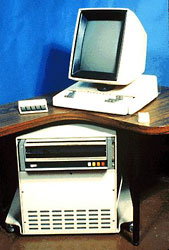The Xerox Alto was an early personal computer developed at Xerox PARC in 1973. Among the technologies incorporated in the Alto were
|

|
| In 1977, the Apple IIe set standards for low cost, high volume, and high reliability. The machine came standard with 64 KB RAM and a backport accessible DE-9 joystick connector. However, the IBM Personal Computer, announced in 1981, became the bestselling computer of any kind. |

|
The success of IBM PCs gave Intel the most popular microprocessor and Microsoft the most popular operating system. The first IBM PCs had 16-bit processors, 64 Kbytes of memory, and a floppy disk drive.
|
He that breaks a thing to find out what it is has left the path of wisdom. ― J.R.R. Tolkien, The Fellowship of the Ring |